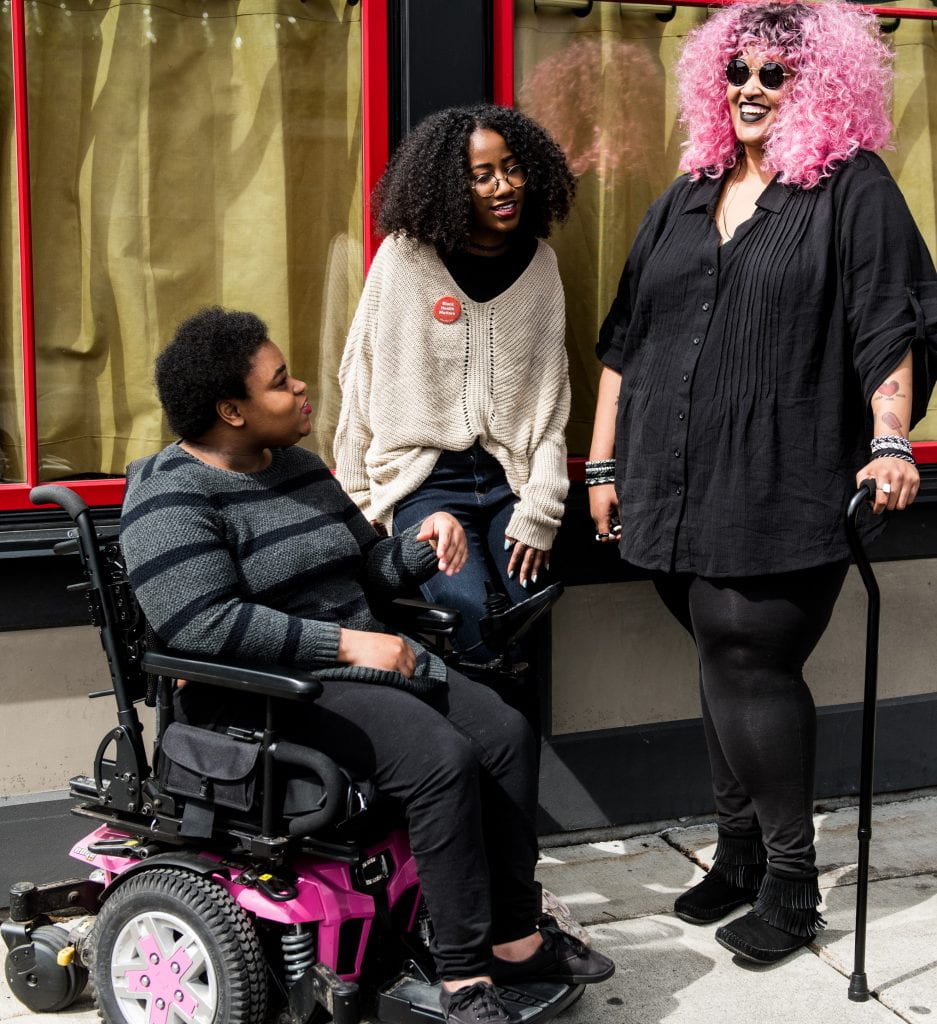
On July 26, 1990, President George H.W. Bush signed the American with Disabilities Act (ADA) into law which provided legal protections for disabled people. To commemorate the signing of this key piece of legislation, July 26th is known as National Disability Independence Day.
According to ADA.gov, “The Americans with Disabilities Act (ADA) is a federal civil rights law that prohibits discrimination against people with disabilities in everyday activities...The ADA guarantees that people with disabilities have the same opportunities as everyone else to enjoy employment opportunities, purchase goods and services, and participate in state and local government programs.” (U.S. Department of Justice Civil Rights Division, 2022) The ADA defines a person with a disability as someone who:
- Has a physical or mental impairment that substantially limits one or more major life activities
- Has a history or record of such an impairment (such as cancer that is in remission), or
- Is perceived by others as having such an impairment (such as a person who has scars from a severe burn). (U.S. Department of Justice Civil Rights Division, 2022)

The ADA is split into five subsections which details the protections disabled people are given. While the ADA prevents discrimination against disabled people due to their disabilities, many disability activists remain vocal about the inequalities disabled people continue to face. For example, during the COVID-19 pandemic, many disability rights activists spoke up on how COVID safety measures were key to keeping disabled and severely ill people safe. When these measures were lifted many disabled people were unable to fully participate in society:
“Disability rights and inclusion activist Imani Barbarin started the #MyDisabledLifeIsWorthy hashtag…in response to [CDC Director Dr. Rochelle] Walensky’s Jan. 7 appearance on Good Morning America, in which the presence of underlying conditions in those who have died from COVID-19 was framed as ‘encouraging news’...That Walensky’s remarks angered so many in the disability community–who took to Twitter to speak out about feeling unprotected and unvalued at a time when opposition to mask-wearing and vaccine mandates remains considerable, and accessibility is compromised–is emblematic of nearly two years of ongoing frustration with a society that is rushing to return to business as usual while leaving high-risk individuals isolated and vulnerable.”
(Pagano, 2022)
Disability rights activists point out that accessibility features allow disabled people to engage with society and also benefits able bodied people. As disability rights activist Kings Floyd notes in their TEDx talk Lessons in Making Aging Accessible, From a Millenial: “If we cannot support the community in which we live everyday, to be able to connect, to be able to socialize, to be able to be accessible, we are not planning for our future and we are not planning for our success.” (Floyd, 2019)
The movement for equal rights for disabled people has a long history and is still active today. A Disability History of the United States (available through the ConsortiumLoan Service) provides a detailed account of the disability rights movement and key figures. Other important books that cover this topic include Twenty-Two Cents an Hour: Disability Rights and the Fight to End Subminimum Wages, Accessible America: A History of Disability and Design and Disability Rights, Benefits, and Support Services Sourcebook. NPR’s Independence Day For Americans with Disabilities focuses on the fight for the Americans with Disabilities Act. Judith Heumann’s TED talk Our Fight for Disability Rights–and Why We’re Not Done Yet is a personal narrative about the fight for accessible facilities and job opportunities. Lastly there is the Disability Visibility Project which is an online storytelling website that publishes work by disabled creators.

References:
Floyd, K. (2019, December 13). Lessons in Making Aging Accessible, From a Millenial. YouTube. https://www.youtube.com/watch?v=DsWPbi-XTK4&t=1s
Pagano, J. (2022, January 23). #MyDisabledLifeIsWorthy highlights disability community’s pandemic frustrations: ‘We are seen as collateral damage’. Yahoo!News.
U.S. Department of Justice Civil Rights Division. (2022). Introduction to the Americans with Disabilities Act. https://beta.ada.gov/topics/intro-to-ada/

